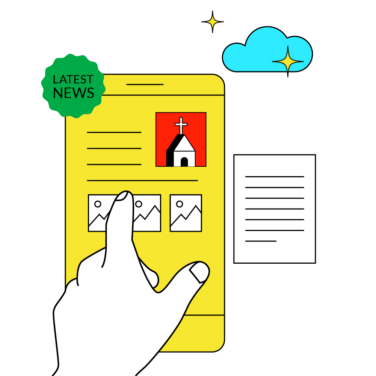If you're wondering what church communications are, what a church communications plan is and how to use one, read on!
In this post, we’re going to tackle some the most relevant questions about developing an effective church communications plan, so you can create your own. Keep reading to find out:
- Why develop a church communications plan?
- What is church communications?
- How to develop a church communications strategy
- Examples of church communications
- Template for church communications
Why develop a church communications plan?
So why should you bother developing a church communications plan? In short, it's because the good news of the gospel is at stake.
Let me explain.
We all know the gospel is ‘good news.’ But news like the gospel, as good as it is, cannot be called ‘news’ in the first place without also having hands, feet, and mouths planning to communicate it (c.f. Romans 10:14-17).
Here comes the local church: the planner, articulator, and communicator of the message that Jesus Christ laid down his life for those who couldn’t earn God’s love (c.f. Romans 5:8).
Local churches communicate, inside and outside of themselves, in ways that are creative and distinct from one another. But regardless of any creative differences, each church needs to consider how to develop an effective communications plan.
If it doesn’t, the gospel--the news to be communicated--may itself be at stake.
What is church communications?
Church communications are the ways in which a local church expresses and makes known its mission and message.
Internal and External Communications
Church communications can both internal communications and external communications.
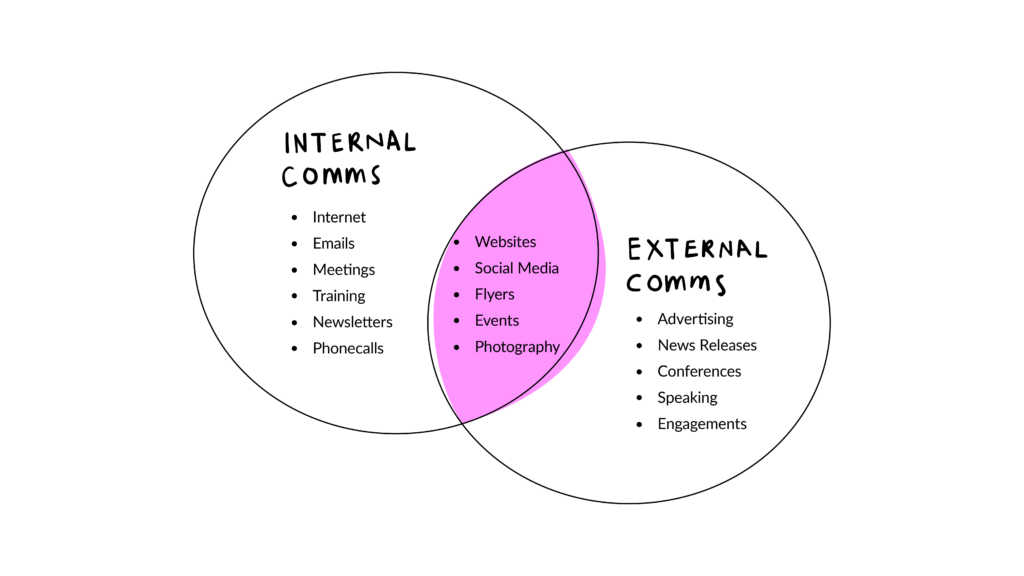
Internal church communications are typically within and on behalf of the local church, who makes its messaging known to its own people, like:
- church staff,
- church leaders,
- volunteers,
- small groups
- and church members.
Internal people embrace and advance the mission and the message.
But church communications is also understood by way of external communications, when the church makes known the right message, beyond itself. This could be by way of evangelism or outreach, to the de-churched, unchurched, and so on, using:
- social media,
- podcasts,
- text messages,
- live streaming,
- the church's website, and many other options.
For the local church, people are the mission (c.f. Matt 28:19; 1 Chron 16:24; Matt 9:35-36). So, having people inside the church reaching people outside of it is also an 'ends' of the communications plan. People reaching people.
This is significant because we can think of communications plans simply as a 'means.' But they aren't. Here's a link explaining the idea of fulfilling the mission of God through the multiplication of people via church plants. Good communications help make a 'means' also an 'end'.
Integrated Communications
The internal and external forms of church communications require a little further thought and explanation. They can be discussed separately only in theory because in practice they are highly dependent upon each other.
For example, let's say a local church's goal is to increase outreach and evangelism. This is a communication channel we probably think of as external.
Yet, the best way to ramp up outreach could actually be by addressing an area not outside, but inside--like improving the software you use to manage your church, or to communicate the vision and how this goal is going to be achieved and addressed through ministry.
My local church has just upgraded to the new Planning Center software. This suite of products has helped us keep-on-top-of everything from what's going on in a ministry team all the way to first-time follow-ups with guests.
It has also been super helpful for scheduling and registering people in church events, like Christmas and Easter, which are especially complicated to plan, communicate, and manage during COVID!
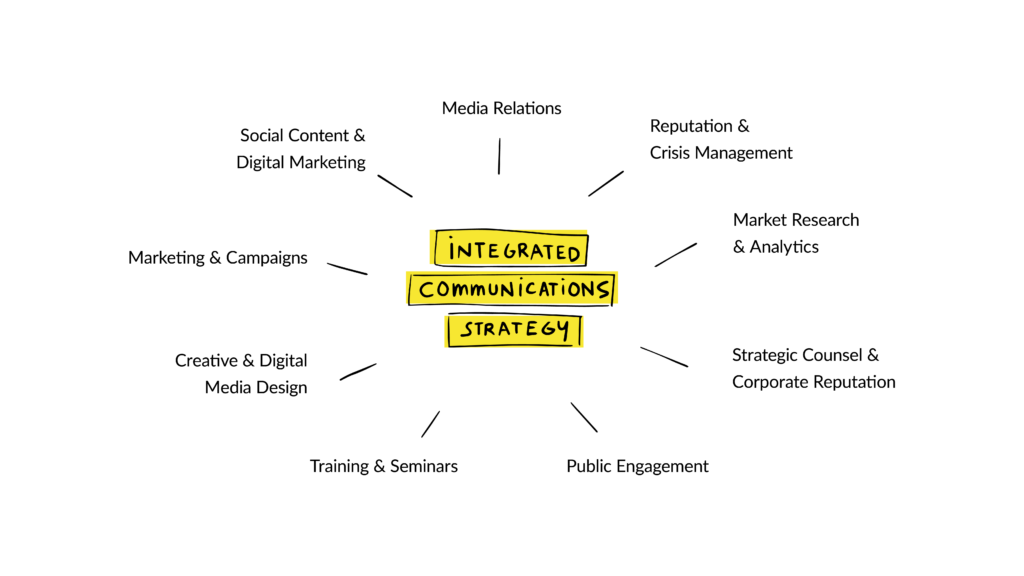
Each church needs to wrestle with the degree to which its internal and externals communications plans are linked. But it's hard to think of a good external communications plan without there also being a robust and cohesive team working together behind-the-scenes, with the right tools.
So, church communications require integration and a blended value approach. This also relates to the church's overall goals, objectives, and strategy.
Related List of Tools: 10 Best Church Website Builder
How to develop a church communications strategy
The best church communication strategy uses multiple mediums to reach its intended audience with an integrated, foundational idea or message.
In the Church Communications Handbook, George Barna says,
"Most communications experts will tell you that your best media strategy is one that relies upon a blend of several media to reach your desired audience."
George Barna
If your goal is to do this online, Brady Shearer's YouTube video is super helpful in this medium. In particular, his rule #3 highlights what we will pick up below.
Here are 5 steps you can ask in order to develop an integrated communications strategy:
Step 1: Who is the target audience?
A blended church communications strategy first identifies who is being communicated with. This makes sense when talking about the mission and message of the gospel because, in the end, the intended audience of the gospel is everyone (c.f. Rev 7:9).
Jesus Christ came into the world so that everyone would come to know and experience his love (c.f. Ps 67:2; John 3:16; and 1 Tim 2:4). As we discussed above, the local church owns this communication.
Step 2: Why this target audience?
This is your opportunity to refine your audience. In the case of the gospel, "everyone" is far too large a demographic for any single, local church to bite-off-and-chew on its own. So, with this step, you can ask why or why not this person or group of persons.
"Everyone" has different habits, preferences, and areas of interest, meaning that reaching them with one medium or one strategy in isolation of others is literally impossible.
So, understanding that local churches can rely upon one another, and we can see the capital "C," universal Church working across the globe.
Also, understanding that there are different mediums through which different people can be reached helps you know why one audience can be targeted and another cannot.
After asking the question of why your audience can become more focused and narrow.
Step 3: What to communicate to them?
This is where you clarify your medium and message. The gospel message itself isn't brand spanking new. But it can be thought of as old news that brings new life in new ways.
So, answering what to communicate is more a matter of what emphasis of the gospel is on display. You can figure that out be addressing these questions:
- What truth or truths of the gospel are being articulated or supported by this communication?
- How is Jesus revealed by what I am saying or how I am treating people with what I say?
- Where is there room for new life to be brought into this medium?
Step 4: When to communicate with the target audience?
The "when" we see in the Bible can be called an "occasion." It can be reactive or proactive. But the best time to communicate is proactive.
If the Apostle Paul's writings teach us anything, it is that local churches in different areas of the world work together and, at the same time, focus on specific messaging to specific people on specific occasions (c.f. Gal 1:6-9).
We see biblical authors writing towards a "future" of things that will happen on planned or foreseen occasions. Some examples of this include the Prophetic literature in the Old Testament, but also how believers in a community should behave in the New Testament (e.g. see Gal 5-6 for proactive communications).
Step 5: How to communicate with the audience?
This can be called a 'Big Idea.' In his book, The Social Church: A Theology of Digital Communication, Justin Wise suggests that each church needs to develop a "Big Idea" that is "foundational," from which every other act of communication flows from the base of a pyramid.
The "Big Idea" that informs strategic communications is developed, for Wise, by receiving life and being breathed on by God the Father. This is no trivial point. Unless the reason why we are communicating is important enough to communicate and empowered by the one who 'communicated' life into being, then it doesn't have much hope of success.
But Wise also gets practical too. He suggests that a "Big Idea" can be formed by approaching the question: "What objectives are we trying to accomplish as a community?" This is integrated not only by things "to do" but by an identity "to be."
Examples of church communications
Let's look at some examples of how a local church can use the integrated communications strategy. Pretend that the 'Big Idea' of this example is "to spread the worship of Jesus in the city of 'XYZ' by increasing the depth and breadth of disciples."
Church's Website Strategy
Church websites are a hugely important aspect of any church communication plan. This is the online medium through which first-time guests learn new information about your church, its mission, its message, and its "Big Idea."
Daniel Babcock suggests in his blog that these people want to join the community, but prefer not to engage right away. If this is true, the website should very quickly include the information you want them to know about the "Big Idea" and how it is directly supported.
This is especially the case because the average website visitor views, says Babcock, only 1 or 2 pages of the website for a very brief amount of time. So brevity is key.
With our "Big Idea" above, the church website should have an about page that states the "Big Idea" explicitly, making available information about small groups that exist. It should also share how the mission relates to what Jesus wants in city "XYZ."
Look at this good and simple example of the landing page at www.life.church. It uses images and banners to point new people directly to areas about the church's mission.
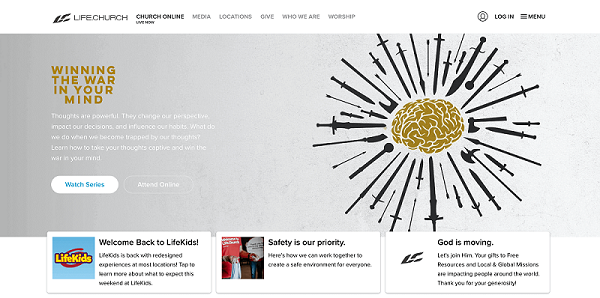
Any information on the website that doesn't relate to the 'Big Idea' shouldn't be on the website.
Social Media Strategy
The "Big Idea" approach translates directly to your church's social media strategy, content, and messaging. In the book, Social Media Strategy, Keith Quesenberry suggests that:
Social media big ideas must be unifying but also interesting and engaging.
Keith Quesenberry
So, how does your church make your message unifying? Well, your social media strategy can support your "Big Idea" by having some specific objectives, like:
- Building Awareness: of your mission and message. (i.e. telling people you run small groups in the city).
- Increasing Engagement: with your church's communications and community (i.e. showing fun events and activities that are happening in your city that you are engaging with).
- Raising Conversion: having non-members of the community see, hear, and respond. (i.e. asking for a response with questions or offering prayer or items that require action).
- Sharing Vision & Values: see people adopt your message and encourage others to do the same. (i.e. reward and encourage people who are loyal to your mission and message).
These objectives help you target a focused subset of the demographic of "everyone" (discussed above). Each objective relates to the "Big Idea" but can be employed on its own with dedicated social media posts at different times.
Here are some examples of Instagram screenshots from theway_vancouver. They do a great job integrating building awareness and sharing vision through integrated communications.
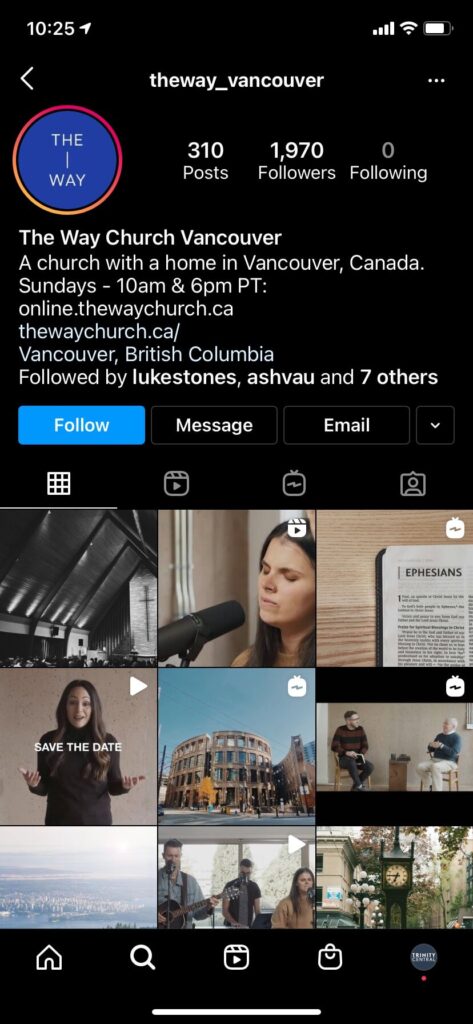
Social Media Best Practices
This is how you can make your big idea interesting and engaging! Some best practices of how to roll out your engaging "Big Idea" on social media include:
- Post more videos: if a picture is worth 1000 words, how many words is a video worth. Here is a blog about the interest that can be generated by video.
- Use interesting pictures: the background, lighting, and colour of a photo are important.
- Tie the description to the photo: Far too often a video or picture isn't related to the description or objective of the approach. The post becomes less interesting and engaging when it isn't unified with itself!
- Use a social media calendar: your church can leverage events in your city and culture by posting about how the "Big Idea" relates to that time. (i.e. if your big idea is "to spread the worship of Jesus" then on something like 'Valentines Day' you could post about how worshipping Jesus is the ultimate form of love).
- Subscribe to social media management software: all of the above best practices can be challenging to employ manually, say if you're sharing with a team manually in a google doc. Hootsuite is an excellent platform for scheduling this automatically. Check Hootsuite out here.
Template for church communications
Get our template for church communication plans, which can help you get started with your church communications plan.
It highlights the message, methods and timing, and the medium. All of which are tied to the integrated approach described above.
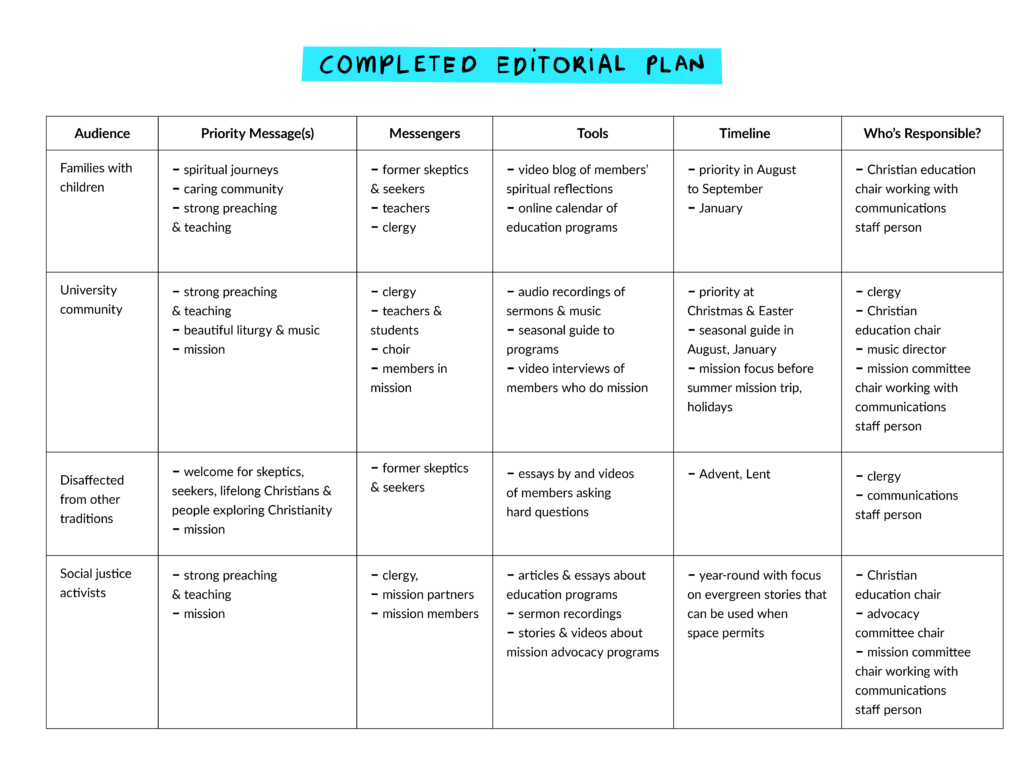
Further Reading
If you found this article helpful, you can check out how to leverage church metrics here. Monitoring and measuring metrics are a very helpful way of knowing whether your social media best practices and objectives are unifying, interesting, and especially, engaging! Additionally, we've listed this year's top church media conferences - which will undoubtedly improve your church comms.
What do you think?
Are you looking to develop a church communications plan? If so, how are the above insights helpful? Did we miss anything? Let us know in the comments below.
Looking for more help managing your church's resources? Here's our list of the 10 Best Church Facility Management Software To Optimize Your Spaces.
Related Read:


